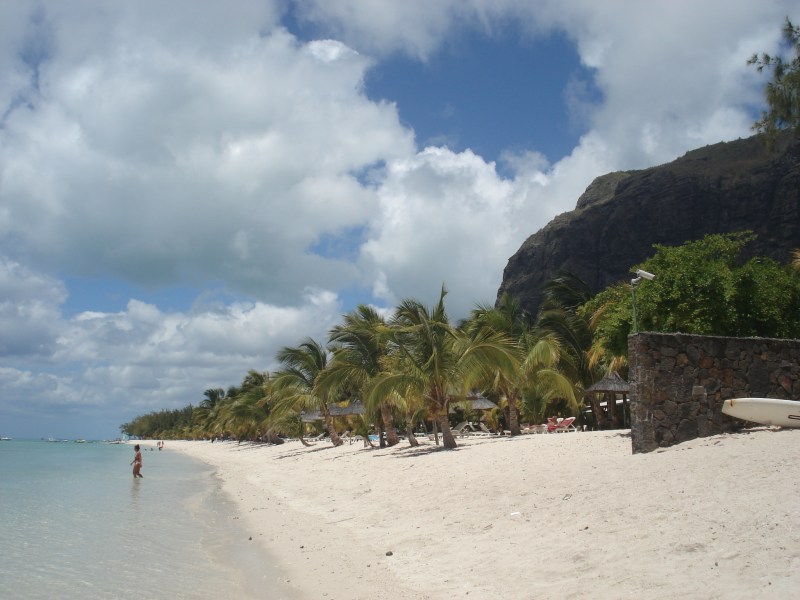|
| |
| Mauritius |
A French Creole Island in the Indian Ocean
|
|
|
|
|
|
|
|
| |
Republic of Mauritius |
|
Motto: "Stella Clavisque Maris Indici"
(Latin)
"Star and Key of the Indian Ocean"
|
|
|
|
|
|
|
|
|
Mauritian |
|
|
- |
|
|
- |
|
|
|
from the United Kingdom |
- |
Date |
March 12, 1968 |
- |
Republic |
March 12, 1992 |
|
- |
Total |
|
- |
|
0.05 |
|
- |
2007 estimate |
|
- |
census |
|
- |
|
616/km² (18th)
1,564/sq mi
|
|
| |
|
|
|
|
The People |
Farm House |
|
|
| Family |
The Ethnic Mix |
 |
|
| The Beaches |
The Lifestyle |
|
| Blend of Creole,Chinese and European |
The cuisine of Mauritius is a blend of Creole, Chinese, European but mainly of Indian influences. It is common for a combination of cuisines to form part of the same meal.
The production of rum is widespread on the island. Sugarcane was first introduced to Mauritius by the Dutch in 1638. The Dutch mainly cultivated sugarcane for the production of "arrack", a precursor to rum.
However, it was during the French and British administrations that sugar production was fully exploited, which considerably contributed to the economical development of the island.[citation needed] Pierre Charles François Harel was the first to propose the concept of local distillation of rum in Mauritius, in 1850.
The sega is a local folklore music. Sega has African roots, and main traditional instruments for producing the music are goat-skin percussion instruments called ravane and metallic clicks using metal triangles.
The songs usually describe the miseries of slavery, and has been adapted nowadays as social satires to voice out inequalities as felt by the blacks. Men are usually at the instruments while women perform an accompanying dance.[21]
Mauritius is blessed with the sounds and rhythms of the western, eastern and African civilisation which have come across its history. This legacy has been preserved and passed on unscattered through generations. On the other hand, some have meld together to yield unique sounds and rhythms.
The most typical folkloric dance of Mauritius is the "Sega" of African origin. This dance is pulsated by the beat of the ravane, a circular drum, and other rhythmic instruments like the maravane and triangle. Danced and sung by the slaves, the Sega has been adopted by all Mauritians and is played on all occasions.
More recently, a new sound, a mixture of the Sega and Reggae music, has found its way in our musical culture. This fusion music called the Seggae, a melodious and entertaining new rhythm that reflects the mixed aspect of Mauritius, emerged in the 80's. Originally the music of the Rastafaris and the poor suburbs of Port Louis, it has found its way to the nightclubs and the mainstream of Mauritian local music.
There are also traditional music and dances that have been introduced by the Indian and Chinese migrants coming to Mauritius. Few things compare to the refines and elegance of the
Indian dances. Dressed in colourful sarees, the dancers execute precise choreographies with each posture and attitude expressing its own meaning. They are accompanied by the exquisite sound of the sitar and tabla expressing the finest (refined) and magic behind the oriental culture.
There are also the very colourful Chinese traditional dance with the ancestral lions and Dragon dances being the best known. The sight of these mystical creatures brought to life by the precision and agility of the dancers is a must to be seen.
Western music is also well represented in the Mauritian culture. This includes the mainstream music amid rap, hip-hop, rock, Jazz band and other more traditional music like the waltz as well as all types of ballroom dancing. There is also a strong following for the 60's to 70's oldies, with the likes of Elvis Presley, Cliff Richard, Englelberd Emperding being part of the national musical heritage.
The island has also given rise to a diversified literature, prominent in the French, English, and Creole languages. Jean-Marie Gustave Le Clézio, the 2008 recipient of the Nobel Prize in Literature, is of Franco-Mauritian origin and lives on the island for part of each year.
Hinduism is majority religion in Mauritius followed by Christianity & Islam. Buddhism & Chinese faiths are also found. Hindu 52%, Roman Catholic 24%, other Christian 8%, Islam 14.4% (2000). Churches, Chinese, and Dravidian Tamil pagodas and temples are found in large numbers.[22]
The Tamil festival Cavadee, Chinese New Year, Mahashivaratri, Pere Laval festival and Eid Al-Fitr are celebrated.[21] Mauritius should also be discovered in the back-country also, where the culture is highly contrasting with what is seen in the cities.
|
| Source |
|
|
 |
 |
| | |
|

